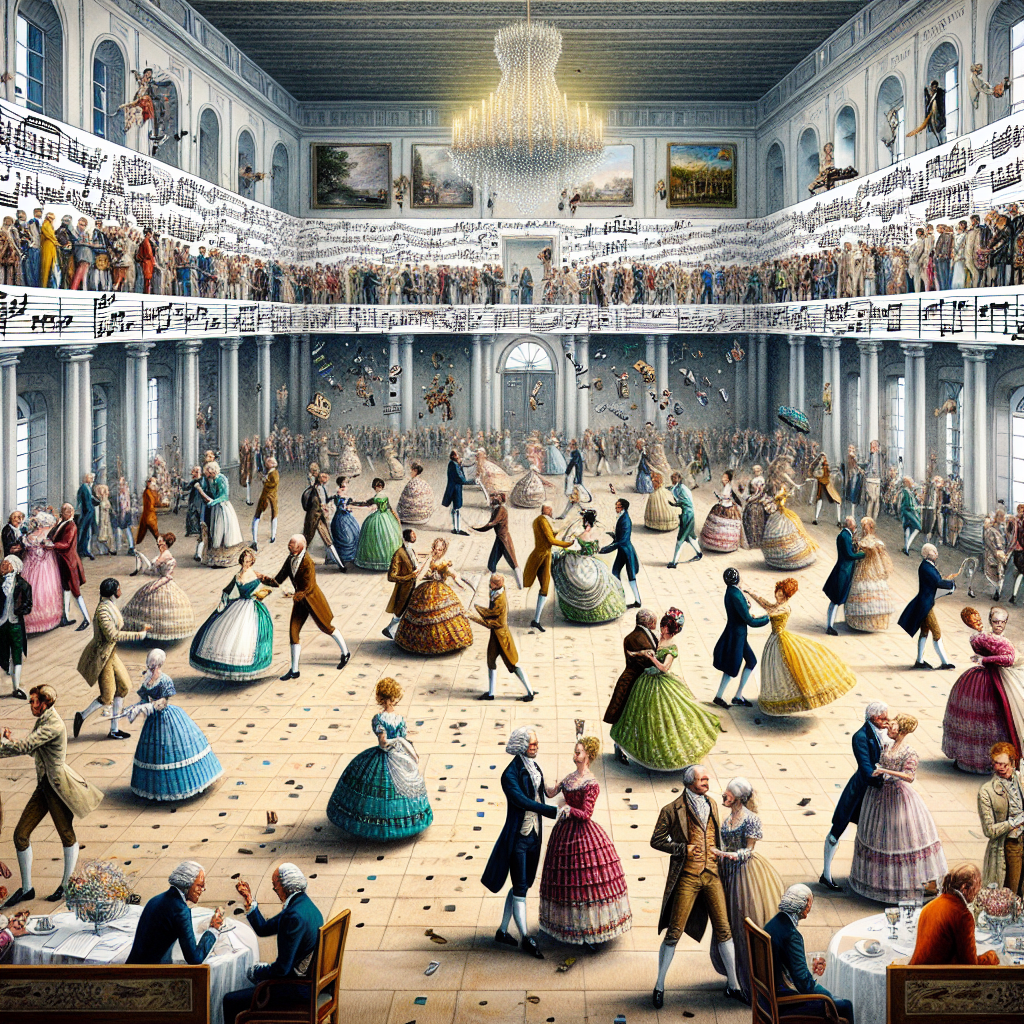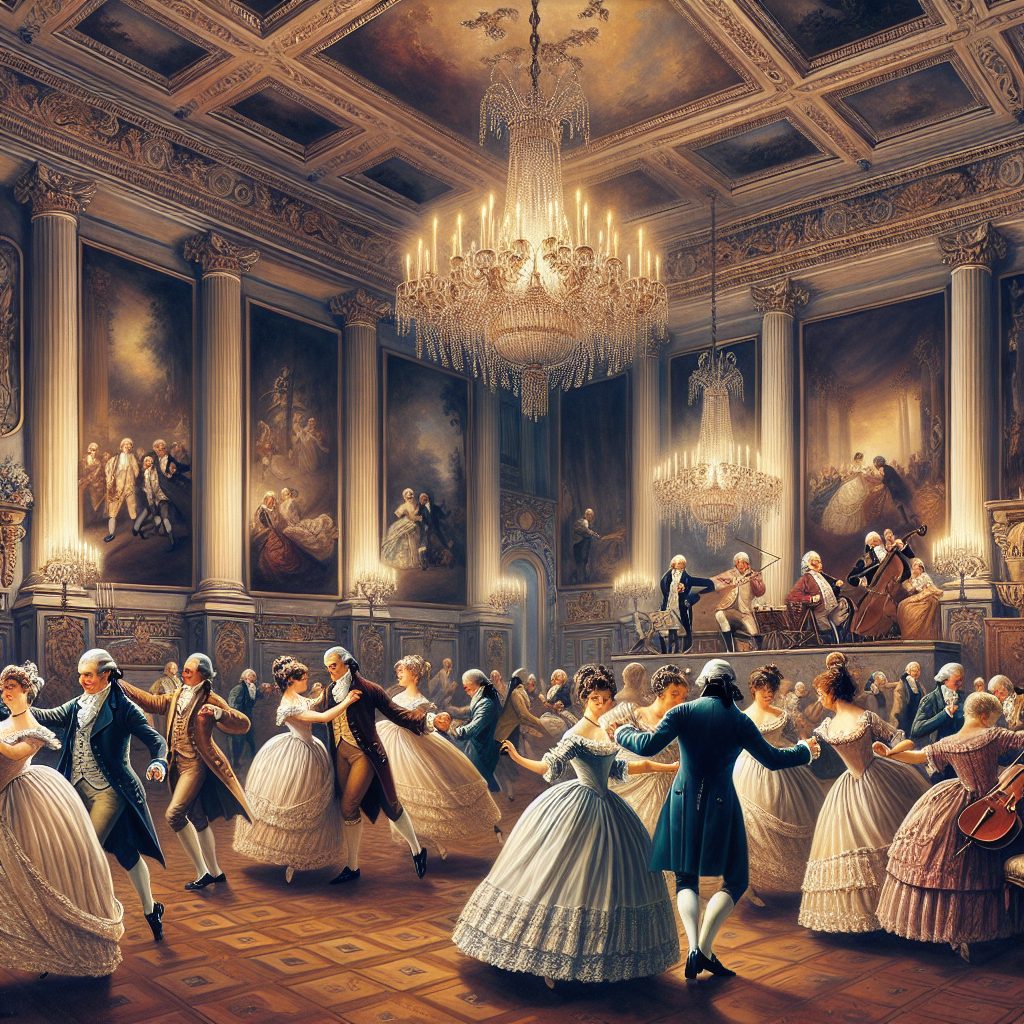
Beethoven’s Contredanses: History and Musical Insight
Ludwig van Beethoven is widely recognized as a revolutionary composer who bridged the Classical and Romantic eras. His profound works have etched an indelible mark on classical music. Among Beethoven’s diverse repertoires, his contredanses hold a special place. These works, often considered less complex compared to his symphonies or sonatas, nevertheless exhibit his mastery in creating delightful and engaging music. Understanding Beethoven’s contredanses provides a richer appreciation of his artistic journey and the cultural backdrop of his time.
Introduction: Beethoven and Early Life
Ludwig van Beethoven was born on December 17, 1770, in Bonn, Germany. From an early age, it became evident that Beethoven was destined for musical greatness. His father, Johann van Beethoven, recognized his son’s talent early on and provided him with rigorous musical training, often to the point of strictness. Ludwig’s exposure to the world of music began in the courts of Bonn, where his father worked as a musician.
Beethoven’s initial instruction came from his father, but he soon outgrew his father’s capabilities. He continued his training under several instructors, including Christian Gottlob Neefe, who introduced him to the works of Bach and initiated him into the world of composition. Beethoven was recognized as a child prodigy, a young virtuoso with profound potential.
At the age of 21, Beethoven moved to Vienna, a city renowned as the center of the musical universe at that time. This move marked a significant turning point in his life and career. In Vienna, Beethoven studied under renowned composers such as Joseph Haydn and played for prominent patrons and elites, immersing himself in the vibrant musical scene. During this period, he began composing works that would later usher in an era of transformation in classical music.
Beethoven’s Contredanses: An Overview
Among the many forms Beethoven embraced, the contredanse stood out as a notable example of his ability to adapt and excel in various musical forms. The contredanse, or contra dance, was a type of social dance that became highly popular in European courts and bourgeois settings during the late 18th and early 19th centuries. Originating from English country dances, contredanses featured a lively, spirited tempo and were performed in lines or circles.
Beethoven’s contredanses are notable for their light-hearted, playful character, which contrasts with the heavier, more intense emotion of his symphonies and sonatas. Yet, they remain intricately composed, displaying Beethoven’s adeptness at creating engaging and memorable melodies. One notable collection of contredanses by Beethoven is the “Twelve Contredanses,” WoO 14, composed in 1802. These pieces showcase a variety of moods and themes while retaining the essential rhythmic vitality of dance music.
Despite their relative simplicity, Beethoven’s contredanses demonstrate the composer’s signature creativity and attention to detail. His ability to infuse these seemingly straightforward dance forms with nuanced orchestral colors and dynamic contrasts speaks to his genius. For Beethoven, even the simplest dance forms provided a canvas for innovation and expression.
The Historical Context of Beethoven’s Contredanses
Understanding the historical context of Beethoven’s contredanses requires an exploration of the social and cultural milieu in which he composed. The late 18th and early 19th centuries were periods of profound social change. The Enlightenment had ushered in new philosophical ideals centered around reason, individualism, and the pursuit of happiness. In music, this translated into a shift from the ornate complexity of the Baroque era to the clarity and balance of the Classical style.
During Beethoven’s time, Vienna was a buzzing cultural hub. The city’s aristocracy and bourgeoisie were avid patrons of the arts, and social gatherings often featured dance music. Contredanses were especially popular at balls and other social events. These dances reflected the social values of refinement, elegance, and courtliness that were prized in the era’s social interactions.
Beethoven’s involvement in composing contredanses can be viewed as part of his engagement with the cultural life of Vienna. He participated in and contributed to the musical life of the city, crafting music that would be enjoyed by its social elite. His contredanses were likely performed at court balls and other high-society events, offering a glimpse into the composer’s connection with the social fabric of his time.

Musical Characteristics and Analysis
Beethoven’s contredanses, though structurally straightforward, exhibit a variety of musical characteristics that highlight his compositional mastery. The typical contredanse consists of a series of short, repeated sections, often in simple binary or ternary forms. These sections usually feature lively, rhythmic themes ideal for dancing.
In the “Twelve Contredanses,” WoO 14, Beethoven utilizes a range of harmonic and textural techniques to ensure each dance maintains its unique character. For instance, Dance No. 1 begins with a robust, rhythmic motif that sets an energetic tone, while Dance No. 7 incorporates a more delicate and lyrical theme, offering contrast within the collection. Beethoven’s use of orchestration also varies; he skilfully employs different sections of the orchestra to add color and dimension to the dances.
Rhythmic elements are pivotal in Beethoven’s contredanses. Syncopation, unexpected accents, and dynamic contrasts are used to maintain interest and propel the dance forward. These rhythmic intricacies not only serve the practical function of facilitating dance movements but also imbue the music with a sense of vitality and excitement.
Beethoven’s Influence and Legacy
Beethoven’s works, including his contredanses, have had a lasting influence on subsequent generations of composers and musicians. While the contredanses themselves might not hold the same monumental status as Beethoven’s symphonies or piano sonatas, they nevertheless contribute to our understanding of his oeuvre and his impact on the musical world.
His ability to transform simple dance music into something richer and more complex has inspired many composers to explore and expand the boundaries of traditional forms. The contredanses, as part of Beethoven’s early period, offer insight into his evolving compositional style. They reflect his willingness to experiment within various musical genres and his skill in synthesizing popular forms with his unique artistic vision.
The popularity and enduring appeal of Beethoven’s contredanses highlight his capacity to connect with his audiences. They remind us that Beethoven was not only a composer of profound and introspective works but also a creator of joyous and accessible music. His enduring legacy is a testament to his versatility and his deep understanding of the many dimensions of human emotion and experience.
Conclusion: Rediscovering Beethoven’s Contredanses
Rediscovering Beethoven’s contredanses today offers a refreshing perspective on a composer often celebrated for his monumental contributions to the classical music canon. These dance pieces, with their charm, playfulness, and ingenuity, provide a glimpse into a less commonly highlighted aspect of Beethoven’s artistry.
For contemporary audiences and musicians, engaging with Beethoven’s contredanses can be a delightful exploration of the composer’s lighter side. While they may not possess the grandiosity of his later symphonic works, they are imbued with the same meticulous attention to detail and creative spark that characterize Beethoven’s music. The contredanses, in their simplicity and elegance, reveal the timeless appeal of dance and the universality of music as a form of expression.
As we listen to and perform Beethoven’s contredanses, we are invited into the social dances of the past, experiencing the elegance and joy of a bygone era. They remind us that music, whether grand or simple, has the power to connect people across time and space, bringing joy and fostering a shared cultural heritage. In celebrating Beethoven’s contredanses, we honor not just a great composer, but also the enduring power of music to bring lightness and delight to our lives.